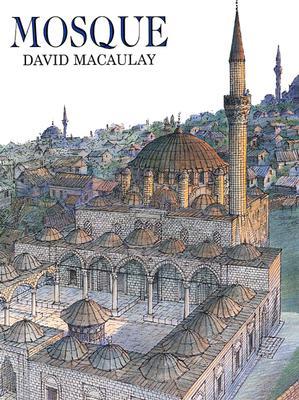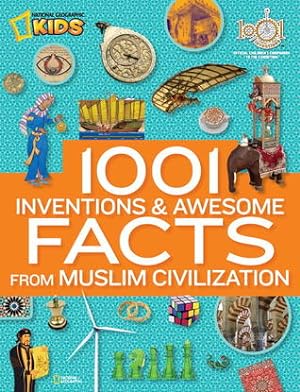
Synopsis
An author and artist who has continually stripped away the mystique of architectural structures that have long fascinated modern people, David Macaulay here reveals the methods and materials used to design and construct a mosque in late sixteenth-century Turkey. Through the fictional story and Macaulay’s distinctive full-color illustrations, readers will learn not only how such monumental structures were built but also how they functioned in relation to the society they served.- Reflect on this thought from the author: “When working in the service of some higher entity, we humans seem capable of surpassing our reach and perhaps even our expectations.” Why do you think this is true?
- Use this story as an opportunity to learn more about the Ottoman empire. Look at a map of the 16th-century Ottoman empire to further geographic exploration. At its peak the empire established peace, stability and religious tolerance which enabled advancements in arts, technology, and architecture. The rulers and practices of the people, however, were not without flaws. Slavery was a common practice. This is reflected in the details on page 16 of the labor force used to lay the foundation.
- Reflect on this sentence: “As a devout Muslim, the admiral understood that all the blessings and riches that had been showered upon him were not due to his own efforts as much as to the will of God…he decided that the time had come to demonstrate both his faith and his gratitude…” (p. 9).
- The Prophet Muhammad ﷺ said, “When a man dies, his deeds come to an end except for three things: Sadaqah Jariyah (ceaseless charity); a knowledge which is beneficial, or a virtuous descendant who prays for him (for the deceased).” (Muslim) Discuss how each component of a charitable foundation (mosques, institutions for religious education, soup kitchens, public baths and public fountains to provide fresh drinking water for all) could serve as sadaqah jariyah for the individual who establishes it.
- The author writes, “A ram was sacrificed and its blood was placed at each corner of the prayer hall” (p. 28). Traditionally, Muslims do not use the blood of an animal to sanctify the construction of buildings, especially mosques. Allah ﷻ says in the Qur’an, “Neither their meat nor blood reaches Allah. Rather, it is your piety that reaches Him” (22:37). This may have been a local cultural practice at the time.
- The interior decoration of the mosque was “ drawn from three sources—the words of the Koran, natural vegetation, and the order and complexity of geometry” (p. 68), as opposed to forms of living things. Why do you think this is?
- Discuss the importance of having focus during prayer. “Then as the imam led the congregation in prayer, the splendor of the architecture in which they were gathered temporarily faded. Each worshiper now entered a more intimate space—a space defined entirely and fully by the five positions of prayer within the borders of his own prayer mat” (p. 83).
- There are references to the admiral having more than one wife (p. 78, 91). This may be a good opportunity to explain to children that this was a common practice in pre-modern times, although less common now. It was also a practice of our beloved Prophet Muhammad ﷺ although it is rarely practiced by Muslims in the West.
Mindful Muslim Review
“When working in the service of some higher entity, we humans seem capable of surpassing our reach and perhaps even our expectations.” Author David Macaulay creates a fictitious story of a wealthy man who commissions a charitable foundation in recognition of his gratitude for the blessings God has bestowed upon him. The author extensively details how such construction was completed in Istanbul during the Ottoman empire in the sixteenth century. The illustrations bring to life how individuals left a lasting impact on their societies, some of which can still be seen today. The reader is introduced to the famous Ottoman architect Sinan, whose work informed the architecture of mosques and related structures throughout the empire even after his death. The book dives deeper and details the importance of the shapes chosen, related symbolism, the direction of the walls, the open nature of the prayer halls, the physics behind the support needed, the different types of materials used and shows how people of many religious faiths—Muslim, Christian and Jews—all worked together to build the charitable foundation. Elements of our faith, such as God, charitable acts, generosity, the call to prayer, prayer and Hajj are interwoven throughout the story. This unique masterpiece serves as a tribute to our Islamic heritage earning our gold star. The last paragraph of the preface along with the introduction really enriches the storyline and is not to be missed. Note: Parents of young children may want to use a thick black marker to block out images of naked men, shown from the back, in a public bath house (p. 56-57).




